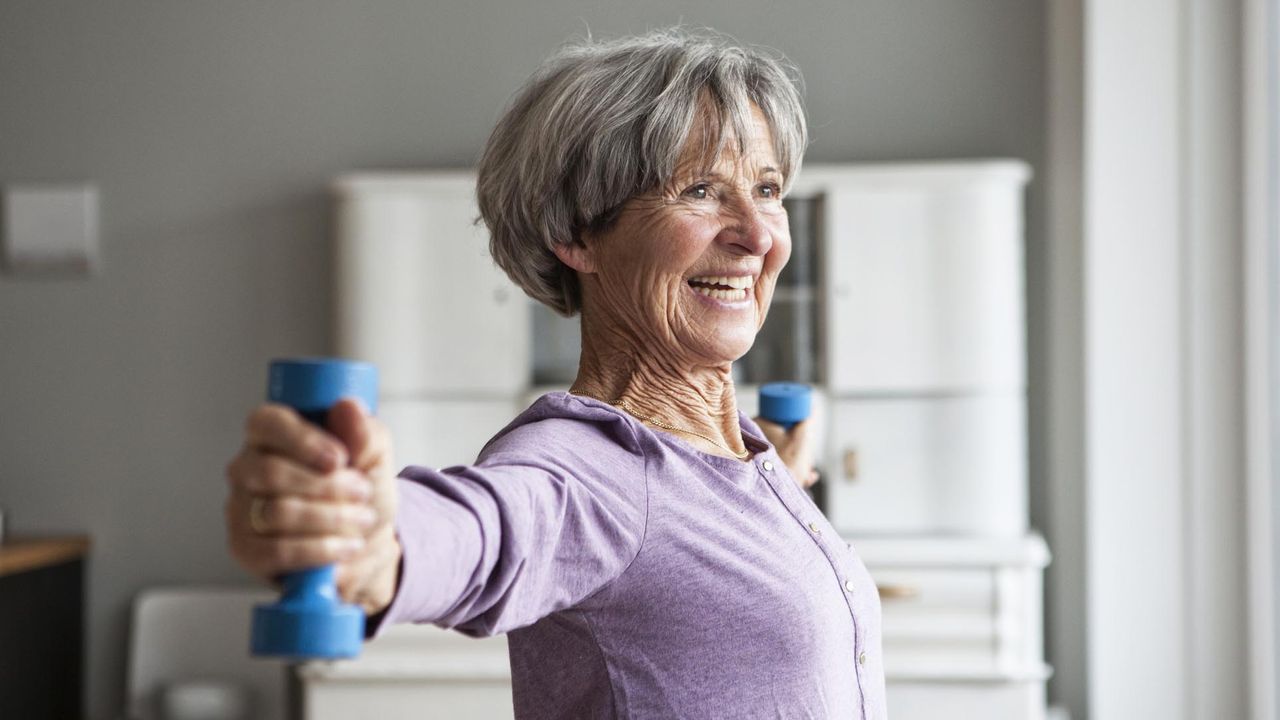Health
Boost Your Agility: Low-Impact Plyometric Training for Over 50s

Staying agile and strong as one ages is essential for maintaining an active lifestyle, especially after the age of 50. A recent focus on age-friendly plyometrics, or low-impact jump training, highlights exercises that enhance muscle responsiveness while safeguarding joint health. These exercises also promote bone density and balance, crucial components in healthy aging.
According to Amanda Dvorak, a certified personal trainer with Garage Gym Reviews, “Low-impact jump work helps keep your muscles quick and responsive, which is important for everyday tasks like avoiding a trip or moving quickly when you need to.” This approach allows individuals to improve cardiovascular fitness without the stress associated with higher-impact routines.
The following low-impact plyometric exercises are gentle on the body yet deliver significant benefits. They can help enhance daily activities such as climbing stairs, preventing falls, and keeping pace with grandchildren.
Getting Started with Plyometrics
Before introducing jumping exercises, it is crucial to establish a solid foundation of strength and stability. Dvorak emphasizes the importance of being able to squat and lunge comfortably before progressing to jump training. “You should also be able to land softly, which means bending at the hips and knees to absorb force,” she advises.
In addition, Stephen Sheehan, another certified personal trainer, suggests a simple test for readiness: balancing on one leg for 20 to 30 seconds. “A baseline level of strength and stability lowers injury risk and makes the transition to dynamic moves safer,” he explains. If balance is a challenge, it is recommended to focus on strength-building exercises, such as bodyweight squats and core workouts, before integrating plyometric movements.
Recommended Low-Impact Plyometric Exercises
1. **Sit-to-stands with a hop**
This exercise enhances leg power and coordination by mimicking the action of standing from a chair, but with an added explosiveness that fosters quicker reactions.
– **How to do it:** Sit at the edge of a stable chair, feet hip-width apart. Keep your chest lifted and hands crossed over your chest. Press your feet into the floor, drive through your heels to stand, and lightly jump a few inches off the ground. Land softly, bending your knees to absorb the impact, then sit back down before repeating.
2. **Step-up hops**
Step-up hops simulate everyday movements such as climbing stairs while strengthening each leg individually, enhancing balance and coordination.
– **How to do it:** Stand facing a sturdy step. Place your right foot firmly on the box, engage your core, and drive through your right leg to stand tall while lifting your left knee to your chest. At the top, add a small hop on your right leg, landing softly to cushion the impact before lowering your left foot back down.
3. **Heel raises with mini hops**
This exercise targets the calves and ankles, vital for maintaining balance and stability.
– **How to do it:** Stand with feet hip-width apart near support. Rise onto the balls of your feet, then add a small hop at the top, landing softly on the balls of your feet with knees slightly bent.
4. **Side-to-side line hops**
These hops improve lateral agility and ankle stability, aiding in balance during quick changes of direction.
– **How to do it:** Stand with your feet together next to an imaginary line. Lightly hop both feet side to side over the line, ensuring soft landings.
To incorporate these plyometrics into a fitness routine, Dvorak recommends starting with two sets of six to eight repetitions of one or two exercises, twice a week. Focus on smooth, quiet landings rather than height. As stability improves, participants can gradually increase the number of repetitions or attempt higher jumps.
Resting for 30 to 60 seconds between sets and keeping sessions under 25 minutes will also help maintain engagement and prevent fatigue.
As individuals embrace these age-friendly plyometric exercises, they can enjoy enhanced agility and strength, allowing for a more active and fulfilling life as they age.
-

 Technology5 months ago
Technology5 months agoDiscover the Top 10 Calorie Counting Apps of 2025
-

 Health3 months ago
Health3 months agoBella Hadid Shares Health Update After Treatment for Lyme Disease
-

 Technology7 days ago
Technology7 days agoOpenAI to Implement Age Verification for ChatGPT by December 2025
-

 Health3 months ago
Health3 months agoErin Bates Shares Recovery Update Following Sepsis Complications
-

 Technology4 months ago
Technology4 months agoDiscover How to Reverse Image Search Using ChatGPT Effortlessly
-

 Technology3 months ago
Technology3 months agoElectric Moto Influencer Surronster Arrested in Tijuana
-

 Technology1 month ago
Technology1 month agoDiscover 2025’s Top GPUs for Exceptional 4K Gaming Performance
-

 Technology5 months ago
Technology5 months agoMeta Initiates $60B AI Data Center Expansion, Starting in Ohio
-

 Technology5 months ago
Technology5 months agoRecovering a Suspended TikTok Account: A Step-by-Step Guide
-

 Health3 months ago
Health3 months agoAnalysts Project Stronger Growth for Apple’s iPhone 17 Lineup
-

 Health5 months ago
Health5 months agoTested: Rab Firewall Mountain Jacket Survives Harsh Conditions
-

 Lifestyle5 months ago
Lifestyle5 months agoBelton Family Reunites After Daughter Survives Hill Country Floods









